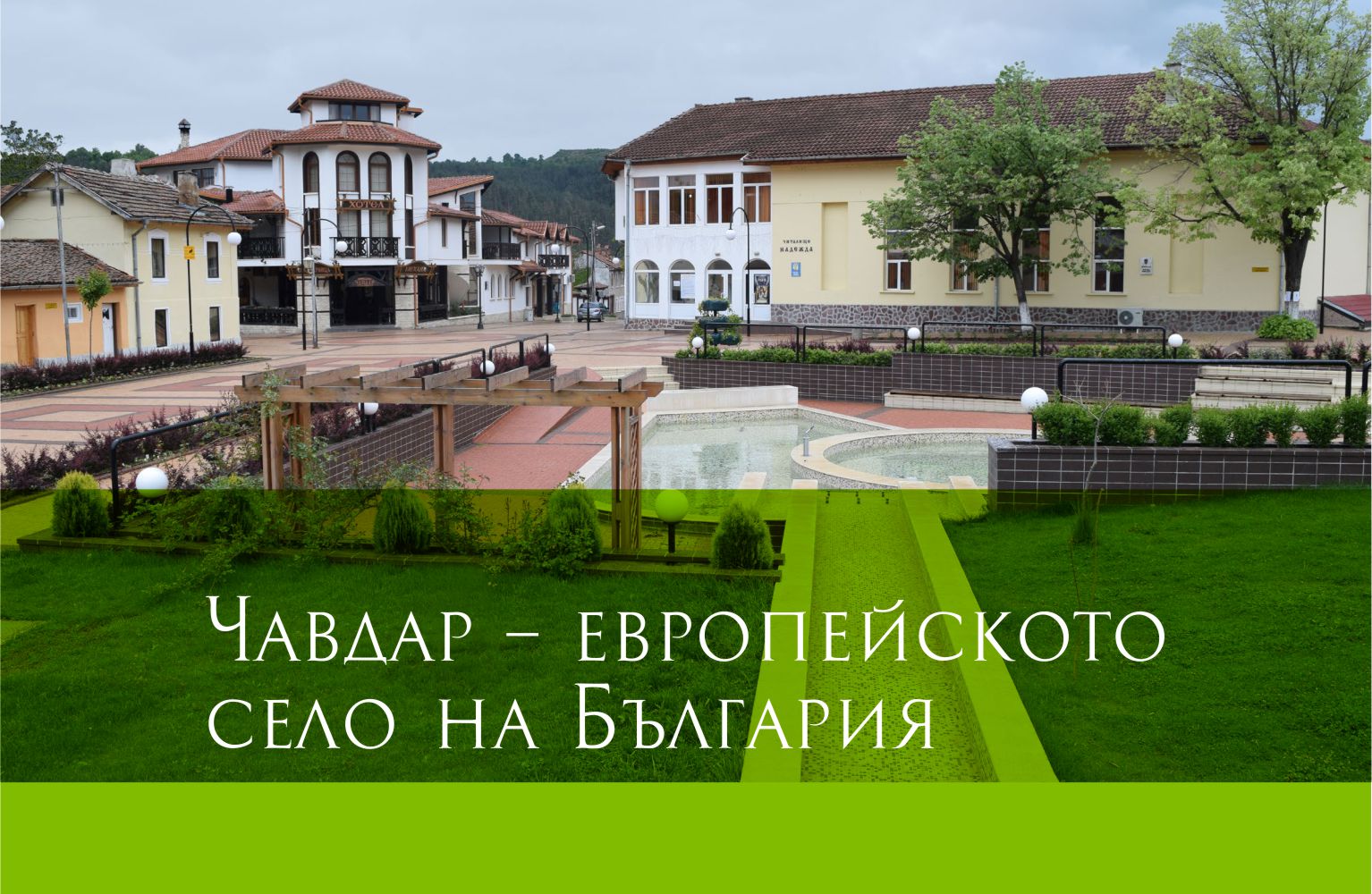The small village of Chavdar lies at the centre of the Chavdar Municipality, Sofia region, and is the only populated place within it. Sofia Region. It is located in the Zlatishko-Pirdop valley, with an average altitude of 570 m., at the foot of the Stara Planina Mountain and the Sredna Gora Mountain to the south. It is located 71 km from the capital, in Zlatitsa and Pirdop. The Topolnitsa River runs through the village. It is located 3 km south of the main road 1-6 (Sofia - Burgas), providing direct access to the capital and other regions. Chavdar is 69 500 ha, 50 850 ha of which is forest.
Population
The village's population is about 1,200 people making it the fourth smallest municipality in Bulgaria (after Treklyano, Boynica and Makresh). 92.4% are Bulgarians, 3.4% are Roma, and 4.2% have not self-identified.
58% of the population is of working age, 29% are already retired, and 13% are children and adolescents.
History
Until 1899 the village was called Kolanlare, after which it became Radoslavovo, and since January 1946, it has been Chavdar. Chavdar is a descendant of the oldest population discovered by scientists in the area, evidenced by the archaeological excavations of the mound near the Topolnitsa river. The handmade stone tools and uniquely painted pottery point out forms of civilization from the Early Neolithic era.
Economy
Agriculture and forestry are the main economic activities in the municipality of Chavdar due to the predominant forest area. Protection, forestation and logging are among the most common activities.
Agriculture is carried out by two cooperatives 'Bratija' and 'Metal Kit 97 Ltd', and by individual farmers. Potatoes, fodder crops, livestock and bees are the main grown crops.
The large commercial complex called "Chavdar" in the town's centre consists of a hotel, a presentation hall, a tavern, a night bar, a Viennese pastry shop, a bakery, a meat and milk shop, a fruit and vegetable shop, a hairdresser's.
The last significant private investment in the village is the "Provence Bakery", offering a wide range of handmade bread, snacks and confectionery. Other business investments are underway.
Unemployment is low due to the large businesses in the vicinity, and the interest in buying property is growing daily.
Tourism
The forest area is a favourable environment for the development of hunting and farming activities. In addition, the area around the village is suitable for tourism. There are two huts nearby- Bratija and Sakardja. "Bratija" is located just below the peak of the same name at 1240 m above sea level. It has 49 beds, whereas "Sakardja" - 36.
Nature lovers can also enjoy the " Kazanite " phenomenon - five waterfalls on the river Barerey, descending from 15 meters and forming a cascade of clear icy water. Located between three massive cliffs, the waterfalls have formed whirlpools (eurozone cauldrons) resembling cauldrons, hence the name. There is a bridge over which tourists can enjoy the view and notice the canyon that the river has formed there. The cascade can be partially observed from several points due to its high cliffs and rugged terrain.
The Chavdar Neolithic settlement offers bypassers another tourist attraction - Archaeological Park "Topolnitsa". It includes an exposition building, a reconstruction of residential buildings typical of the Early Neolithic period, workshops for leatherworking, and the production of stone tools and pottery. Overnight accommodation in the Neolithic dwellings is also provided for lovers of authentic experiences.
The "Chapel" complex on Mount St. Petka - the village's patron- is also among the places worth visiting. You can see the whole Zlatishko-Pirdop valley and the Topolnitsa river from the top, as the peak is 650 m above sea level. The chapel construction began on February 6th, 2008 and was completed by May 2nd. In addition, there are barbecue and dining areas, a camp base, an indoor stage, a restaurant and an electric charging station for vehicles nearby. The "Chapel" is also an Archaeological Park, which turns a relatively small area into a unique opportunity for pilgrimage, and recreational and cultural tourism.
Public infrastructure and living conditions
The central square was built in 2014 and has impressive architecture, combining beautiful pedestrian walkways, wooden bridges and arches, fountains, a rock garden, a mini amphitheatre and a green area with many plant species.
There's a doctor's and dentist's office, a laboratory, a pharmacy, a kindergarten, which educates about 25 children all year round, and the Primary School "St. Kiril and Metodii" - a primary and secondary school with a kindergarten with over 150 years of history. The school has excellent facilities and a young staff that supports about 70 pupils studying there. The schoolyard has a modern sports ground with an artificial surface suitable for several sports. There is also a gym where young people from the municipality can train.
The Chavdar Folklore Centre preserves the local tangible and intangible cultural heritage, interactively presenting folklore, traditions, knowledge and skills as a living memory. It is a space where children and adults can find the information presented through information boards, animated videos, computer games, authentic exhibits, etc. In addition, there are art and interactive installations, a workshop that introduces visitors to the subject and allows them to participate in the educational process ( more at www.folklorecenter.bg).
The European Way of Chavdar started 15 years ago with the Mayor's ambition and vision (Pencho Gerov) and the support and follow through of the current one Grigor Daulov. Against the background of the extinction of Bulgarian villages, Chavdar sets an example for the sustainable implementation of European projects with a positive effect on the demographic development of the region. So far, Chavdar has completed around 30 projects with European funding, which have been invested in street networks, sidewalks, park developments, tourist infrastructure, renovation of public buildings, etc.
Chavdar has all the amenities of a city and yet the irreplaceable feeling of rural tranquillity.






